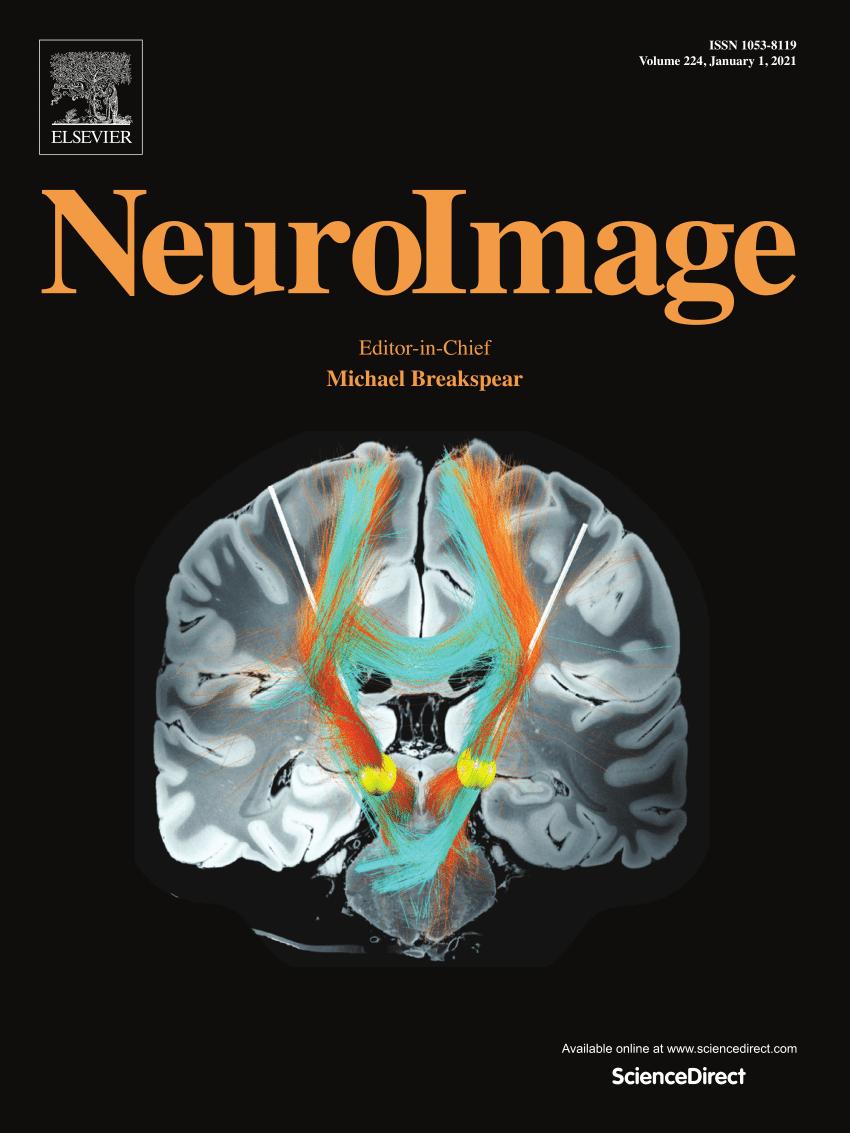Semantic processing of argument structure during naturalistic story listening: Evidence from computational modeling on fMRI
IF 4.5
2区 医学
Q1 NEUROIMAGING
引用次数: 0
Abstract
A long-standing theoretical debate exists in linguistics concerning argument structure processing, with separationism focusing on syntactic structure and projectionism on semantic properties. To investigate whether argument structure processing is primarily influenced by syntactic structure or semantic properties, this study employed integrative neurocomputational modeling to link brain functions with explicitly defined computational models. We analyzed naturalistic functional magnetic resonance imaging (fMRI) data from participants listening to a story, with a focus on subject noun phrase + verb chunks. The methodological framework integrated a general linear model (GLM) analysis of the fMRI data with computational modeling using natural language processing algorithms. These components were integrated using representational similarity analysis (RSA), allowing us to assess the relatedness of two symbolic computational models—one relying on syntactic information from parse trees and the other based on semantic selectional preference information of verbs—to brain activities. The GLM analysis identified significant neural correlates of argument structure processing largely consistent with previous findings, including the precuneus, the right superior temporal gyrus, and the right middle temporal gyrus. Some deviations from previous studies likely reflect the naturalistic nature of the stimuli and our contrast design. The RSA results favored the model utilizing semantic information—a finding further supported by effects observed in brain regions associated with argument structure processing in the literature and by an additional RSA comparing constructions with varying levels of transitivity. These findings suggest that during naturalistic story listening, humans rely heavily on semantic information to interpret argument structure. This study demonstrates an alternative method to engage with the debate on argument structure, highlighting a collaborative effort between theoretical, neuroscientific, and computational linguistics.
自然故事聆听过程中论点结构的语义处理:来自fMRI计算模型的证据
长期以来,语言学学界对论点结构加工一直存在理论争论,分离主义侧重句法结构,投射主义侧重语义性质。为了研究论点结构处理是否主要受句法结构或语义属性的影响,本研究采用综合神经计算模型将大脑功能与明确定义的计算模型联系起来。我们分析了参与者听故事的自然功能磁共振成像(fMRI)数据,重点是主语名词短语+动词块。方法框架将fMRI数据的一般线性模型(GLM)分析与使用自然语言处理算法的计算建模相结合。使用表征相似度分析(RSA)将这些组件整合在一起,使我们能够评估两种符号计算模型(一种依赖于解析树的句法信息,另一种基于动词的语义选择偏好信息)与大脑活动的相关性。GLM分析确定了论点结构处理的重要神经关联,包括楔前叶、右侧颞上回和右侧颞中回,这与之前的发现基本一致。与先前研究的一些偏差可能反映了刺激的自然性质和我们的对比设计。RSA结果倾向于利用语义信息的模型——这一发现得到了文献中与论点结构处理相关的大脑区域的观察结果的进一步支持,并得到了另一个比较具有不同及物性水平的结构的RSA的支持。这些发现表明,在自然主义故事倾听过程中,人类严重依赖语义信息来解释论点结构。这项研究展示了另一种方法来参与关于论点结构的辩论,突出了理论、神经科学和计算语言学之间的合作努力。
本文章由计算机程序翻译,如有差异,请以英文原文为准。
求助全文
约1分钟内获得全文
求助全文
来源期刊

NeuroImage
医学-核医学
CiteScore
11.30
自引率
10.50%
发文量
809
审稿时长
63 days
期刊介绍:
NeuroImage, a Journal of Brain Function provides a vehicle for communicating important advances in acquiring, analyzing, and modelling neuroimaging data and in applying these techniques to the study of structure-function and brain-behavior relationships. Though the emphasis is on the macroscopic level of human brain organization, meso-and microscopic neuroimaging across all species will be considered if informative for understanding the aforementioned relationships.
 求助内容:
求助内容: 应助结果提醒方式:
应助结果提醒方式:


